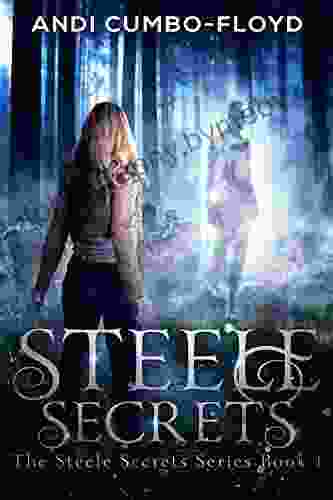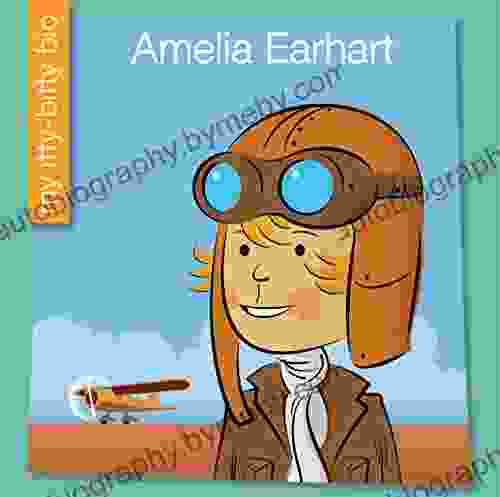Typography: The Art of Communicating with Style

Typography is the art and technique of arranging type to make written language legible, readable and appealing when displayed. The arrangement of type involves selecting typefaces (typefaces),point size, line length, line-spacing (leading),letter-spacing (tracking),and kerning (the adjustment of the space between individual letters).
4.3 out of 5
| Language | : | English |
| File size | : | 2983 KB |
| Text-to-Speech | : | Enabled |
| Screen Reader | : | Supported |
| Enhanced typesetting | : | Enabled |
| Print length | : | 175 pages |
| Lending | : | Enabled |
Typography is a powerful tool that can be used to communicate a wide range of messages and emotions. It can be used to create a sense of elegance, authority, playfulness, or whimsy. Typography can also be used to convey information in a clear and concise way.
The history of typography dates back to the invention of writing itself. The earliest known examples of typography are cuneiform tablets from ancient Mesopotamia. These tablets were inscribed with wedge-shaped characters that were arranged in rows and columns. Over time, typography evolved as new writing technologies were developed.
In the 15th century, Johannes Gutenberg invented the printing press. This invention revolutionized typography, making it possible to produce books and other printed materials in large quantities. The printing press also led to the development of new typefaces and printing techniques.
In the 20th century, typography was further revolutionized by the development of digital technology. Digital typography made it possible to create and manipulate type in new and innovative ways. Today, typography is used in a wide range of applications, from print to web to mobile.
The Elements of Typography
There are many different elements that contribute to the overall appearance of typography. These elements include:
- Typefaces: Typefaces are the individual designs of letters, numbers, and symbols. There are many different typefaces available, each with its own unique character.
- Point size: Point size is the size of the type in points. One point is equal to 1/72 of an inch. The point size of type is typically measured in points or picas. A pica is equal to 12 points.
- Line length: Line length is the length of a line of type in characters or ems. An em is the square of the point size. For example, a 12-point type has an em of 12 points.
- Line-spacing (leading): Line-spacing is the amount of space between lines of type. Leading is typically measured in points or picas.
- Letter-spacing (tracking): Letter-spacing is the amount of space between individual letters. Tracking is typically measured in points or picas.
- Kerning: Kerning is the adjustment of the space between individual letters. Kerning is typically done manually to improve the appearance of type.
The Principles of Typography
There are a number of principles that can be used to create effective typography. These principles include:
- Contrast: Contrast is the difference between the light and dark areas of type. Contrast can be used to create emphasis, hierarchy, and visual interest.
- Repetition: Repetition is the use of the same element over and over again. Repetition can be used to create unity and rhythm.
- Alignment: Alignment is the arrangement of type in relation to other elements on the page. Alignment can be used to create Free Download and visual balance.
- Proximity: Proximity is the relationship between different elements on the page. Proximity can be used to create groups and relationships.
- Whitespace: Whitespace is the space between elements on the page. Whitespace can be used to create contrast, emphasis, and visual interest.
Typography in Practice
Typography is used in a wide range of applications, from print to web to mobile. Here are a few examples of how typography can be used effectively:
- Headlines: Headlines are the titles of articles, stories, and other pieces of writing. Headlines are typically set in large type and are used to attract attention and convey the main message of the piece.
- Body copy: Body copy is the main text of an article, story, or other piece of writing. Body copy is typically set in smaller type and is used to convey the details of the piece.
- Callouts: Callouts are small blocks of text that are used to highlight important information or to provide additional context.
- Captions: Captions are used to describe images and other visuals.
- Logos: Logos are the visual identities of companies and organizations. Logos are typically set in a unique typeface and are used to create brand recognition.
Typography is a powerful tool that can be used to communicate a wide range of messages and emotions. By understanding the elements and principles of typography, you can create effective typography that will help you to achieve your communication goals.
Further Reading
- Typography.com
- Fonts.com
- MyFonts.com
- Adobe Typekit
4.3 out of 5
| Language | : | English |
| File size | : | 2983 KB |
| Text-to-Speech | : | Enabled |
| Screen Reader | : | Supported |
| Enhanced typesetting | : | Enabled |
| Print length | : | 175 pages |
| Lending | : | Enabled |
Do you want to contribute by writing guest posts on this blog?
Please contact us and send us a resume of previous articles that you have written.
 Book
Book Novel
Novel Page
Page Chapter
Chapter Text
Text Story
Story Genre
Genre Reader
Reader Library
Library Paperback
Paperback E-book
E-book Magazine
Magazine Newspaper
Newspaper Paragraph
Paragraph Sentence
Sentence Bookmark
Bookmark Shelf
Shelf Glossary
Glossary Bibliography
Bibliography Foreword
Foreword Preface
Preface Synopsis
Synopsis Annotation
Annotation Footnote
Footnote Manuscript
Manuscript Scroll
Scroll Codex
Codex Tome
Tome Bestseller
Bestseller Classics
Classics Library card
Library card Narrative
Narrative Biography
Biography Autobiography
Autobiography Memoir
Memoir Reference
Reference Encyclopedia
Encyclopedia Andrea Posner Sanchez
Andrea Posner Sanchez Jon Young
Jon Young Laura Schroff
Laura Schroff Dave Heller
Dave Heller Andrew Milburn
Andrew Milburn Carlos Pestana
Carlos Pestana Mahir Ibrahimov
Mahir Ibrahimov Ann Abramson
Ann Abramson Andrew Faulkner
Andrew Faulkner Andrew P Rowan
Andrew P Rowan Rae Brent
Rae Brent Andrew Gennett
Andrew Gennett Michael Meyer
Michael Meyer Andrew Bridge
Andrew Bridge Andrew Mayne
Andrew Mayne Andrew Grant
Andrew Grant Michael Pearle
Michael Pearle Karen Siff Exkorn
Karen Siff Exkorn L H Nicole
L H Nicole Amy Gary
Amy Gary
Light bulbAdvertise smarter! Our strategic ad space ensures maximum exposure. Reserve your spot today!
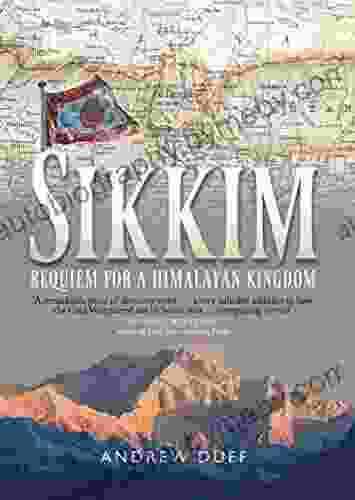
 Geoffrey BlairSikkim Requiem for Himalayan Kingdom: Unraveling the Untold Story of a Lost...
Geoffrey BlairSikkim Requiem for Himalayan Kingdom: Unraveling the Untold Story of a Lost... Edgar CoxFollow ·12k
Edgar CoxFollow ·12k Jeffrey HayesFollow ·17.1k
Jeffrey HayesFollow ·17.1k George OrwellFollow ·3k
George OrwellFollow ·3k Stan WardFollow ·16.4k
Stan WardFollow ·16.4k Troy SimmonsFollow ·12.9k
Troy SimmonsFollow ·12.9k Donald WardFollow ·19.7k
Donald WardFollow ·19.7k Brett SimmonsFollow ·15.5k
Brett SimmonsFollow ·15.5k Chinua AchebeFollow ·18.6k
Chinua AchebeFollow ·18.6k
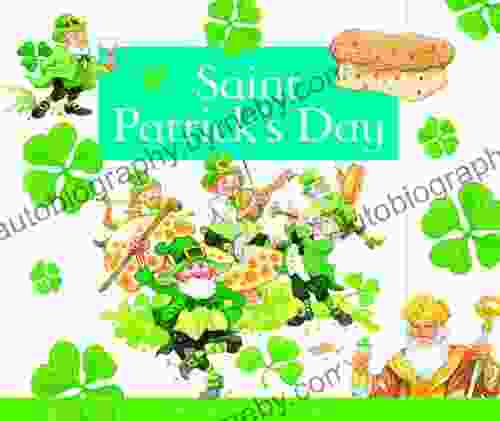
 Bryce Foster
Bryce FosterCelebrate the Luck of the Irish: Unveiling Saint...
As the verdant hues of spring brush...

 Chase Simmons
Chase SimmonsCody Rodeo: A Photographic Journey into the Heart of the...
Step into the arena of the...

 David Mitchell
David MitchellUnveiling the Enchanting World of Door County Quilts: A...
Step into the Heart of Amish Country in...
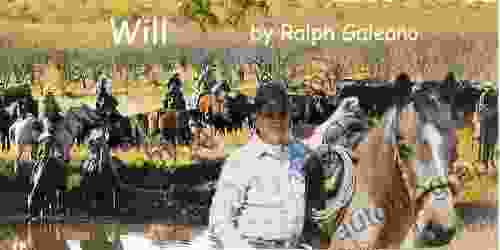
 Floyd Powell
Floyd PowellCowboy Chatter: Unraveling the Enigmatic Tales of the Old...
Step into the...
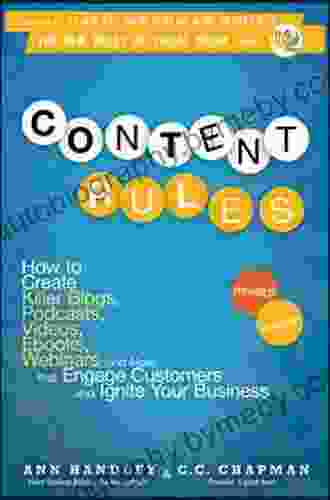
 Ismael Hayes
Ismael HayesUnlock Content Marketing Mastery: How to Create...
In today's digital landscape, content is...

 Boris Pasternak
Boris PasternakMore Than 200 Hardball Questions For The Thinking Fan
The Ultimate Baseball Trivia Challenge Are...
4.3 out of 5
| Language | : | English |
| File size | : | 2983 KB |
| Text-to-Speech | : | Enabled |
| Screen Reader | : | Supported |
| Enhanced typesetting | : | Enabled |
| Print length | : | 175 pages |
| Lending | : | Enabled |





